#Predictions on Mobile App Development Trends
Explore tagged Tumblr posts
Text
The Future of Food Delivery Services: New Trends and Predictions
Ordering food online has become incredibly popular among millennials and Gen Z, all thanks to the easy availability of high-speed internet connections and smartphones. Consumers are getting their favorite food items from their preferred restaurants directly to their doorsteps with a few clicks. So if you are in the food industry or own a restaurant, you must be aware of the future of online delivery services to stay updated and make developments to your restaurant following the modern trends.

Find out what the future of food delivery services, the current popular food delivery trends, and what we can predict in this article. Before discovering the future scope of the food ordering system or delivery process, letlook closelylook at the current food delivery service statistics.
Food delivery services statistics
According to reports, the food delivery service market is expected to increase to $34.68 billion by the end of 2024, which clearly shows a steady rise in the growth curve.
There will be an estimated growth of 19.88% in food delivery services between 2024 to 2027. The market for food delivery services could even reach $71.63 billion by 2027.
According to the meal delivery market forecast, the number of users in this sector could reach 2.5BN by 2029.
What’s Next for Food Delivery Services? Key Trends and Future Predictions

The online food ordering market generates almost $27 billion every year. If you, too, want to be a part of this growth, you need to be aware of the following food delivery services trends and predictions for the future.
1. Restaurants launching their food delivery platforms

The recent trend in food delivery services of restaurants is witnessing a shift from the idea of relying on third-party meal delivery partners like Foodpanda, Uber Eats, to directly offering food delivery services of their own.
Consumers also prefer to place food orders directly from the restaurant instead of third-party websites. Well-known food brands like KFC, Pizza Hut, etc have also launched their own food ordering and delivery services, which let their customers order food directly from their restaurant website or mobile app.
Whether you have a big restaurant or a small one, you too can create your restaurant delivery system on your website and save a huge amount of money that you might be spending on third-party platforms. How? The answer is with FoodMato. It is a WordPress-based restaurant management solution that takes care of all your online restaurant management needs, including creating a food delivery system.
Discover the solution now!
2. Virtual assistants
Virtual assistants are getting increasingly popular in multiple industries, including restaurants. However, not a lot of restaurants have adopted this new technology yet, which means you still have a chance to take full advantage of this technology. This is surely going to be dominant in the future.
A virtual assistant is an AI system that accepts the voice commands of your customers and delivers them to your POS system. It not only saves your time but also helps customers place their online orders to your restaurant easily.
3. Green transport system
Using a green transport system is all about using environmentally friendly vehicles. Some restaurants rely on delivery teams that consist of teenagers who drive vehicles older than 10 years, which is harmful to the environment. To avoid this, it is predicted that most restaurants will rely on eco-friendly delivery systems by switching to bikes or electric cars for food delivery in the future.
4. Robotic Vans for delivery
Robotic vans or self-driving robots are redefining the concept of food, groceries, and package deliveries. These robots have made the local food delivery system easy and convenient for restaurant owners as well as customers. Though the usage has not become very popular yet but it has already been witnessed in a few college campuses of the USA for food delivery. More and more applications of these robot vans or self-driving robots are expected in the future in the food delivery market.
5. Increasing cloud kitchens

Cloud kitchens or ghost kitchens are the new type of restaurants that are based on commercial cooking spaces where foods are prepared only for delivery. They do not have a physical establishment to invite guests for meals as the entire system is based on online orders and delivery. As there is a rapid increase in the demand for online deliveries, the concept of ghost kitchens is anticipated to be more popular.
This allows restaurant owners to reach out to a wider audience without spending much on physical stores and other things that are required for a full-fledged restaurant.
Create your food delivery system with FoodMato
Having your food delivery system comes with multiple benefits that include:
No reliance on third parties.
Better exposure.
Cost saving, you don’t have to pay for third-party platforms.
Increase in profit.
Improves user experience.
Boost brand credibility.
If you want to experience all these advantages for your restaurant, use FoodMato’s complete online restaurant management solution that includes online food delivery services as well. Discover our services now!
Frequently Asked Questions
What is the future of food delivery services?
The future of food delivery services globally appears to be very promising, with an expected growth of 281.52 billion by 2031.
How can I create my food delivery system?
You need the right software to create your food delivery system. Use FoodMato to add a WordPress-based online food delivery system to your website.
What is the cost of creating a food delivery system on my website?
The expense of creating a food delivery system usually depends on the software you use for this purpose. If you are looking for effective and affordable food delivery software, try FoodMato. It offers its complete online restaurant management solution, including food delivery for only $99.
2 notes
·
View notes
Text
Digital Marketing in 2025: Trends, Tools, and Strategies for the Future
Its 2025, businesses must remain ahead of the curve to remain competitive in the rapidly evolving field of digital marketing. Digital marketing in 2025 will be more data-driven, customer-focused, and interactive than ever thanks to the most recent developments in AI, personalization, and user behavior analysis.
What’s New in Digital Marketing in 2025?
1. AI-Powered Marketing
Artificial intelligence is now at the core of most marketing tools. From content generation to predictive analytics and chatbots, AI is enabling brands to automate processes while enhancing customer experience.
2. Hyper-Personalization
Generic content no longer cuts it. Brands in 2025 are using real-time data and machine learning to deliver hyper-personalized content, emails, and ads tailored to individual user preferences and behaviors.
3. Voice Search & Conversational Marketing
With the increasing use of voice assistants, optimizing for voice search has become a must. Conversational marketing through chatbots and messaging apps is also revolutionizing how businesses interact with customers.
4. Video-First Content Strategy
Short-form videos dominate platforms like Instagram Reels, YouTube Shorts, and TikTok. Brands are investing in video content not just for awareness but also for conversions, product demos, and testimonials.
5. Privacy-First Marketing
As privacy regulations tighten and third-party cookies fade out, marketers in 2025 rely heavily on first-party data, ethical tracking, and consent-based marketing strategies.
Top Digital Marketing Strategies for 2025
SEO 2.0: Search engines are prioritizing user experience signals, mobile usability, and voice search optimization. Semantic search and intent-focused content are critical.
Omnichannel Integration: Consistent brand messaging across platforms—social, email, web, apps—is key to improving customer journeys and retention.
Micro-Influencer Collaborations: Niche influencers with loyal audiences offer high engagement and authenticity.
Interactive & Immersive Content: AR filters, interactive quizzes, and gamified experiences increase engagement and dwell time.
Sustainability Marketing: Brands that showcase ethical practices and sustainability efforts attract conscious consumers.
Tools Dominating Digital Marketing in 2025
AI Content Tools: ChatGPT, Jasper, Copy.ai
Analytics Platforms: Google Analytics 4, Mixpanel, Heap
Marketing Automation: HubSpot, ActiveCampaign, Klaviyo
Social Media Management: Buffer, Later, Hootsuite
SEO & SEM: Semrush, Ahrefs, Surfer SEO
Final Thoughts
Transparency, intelligent technology use, and meaningful engagement are key components of digital marketing in 2025. In this next stage of the digital era, brands that adjust to these changing trends and put the needs of their customers first will prosper.
Now is the time to revisit your digital strategy and align it with the future. 2025 calls for audacious, creative, and customer-focused marketing initiatives, whether that be through embracing AI, improving personalization, or producing immersive content.
Are you prepared for digital marketing's future?
2 notes
·
View notes
Text
𝐓𝐨𝐩 5 𝐅𝐮𝐭𝐮𝐫𝐢𝐬𝐭𝐢𝐜 𝐒𝐢𝐝𝐞 𝐇𝐮𝐬𝐭𝐥𝐞𝐬 𝐟𝐨𝐫 𝐓𝐞𝐜𝐡𝐢𝐞𝐬 𝐢𝐧 2025
In today’s fast-paced tech world, side hustles can be a fantastic way for professionals to boost their skills and earn extra income. With advancements in artificial intelligence, remote working, and a growing need for tech solutions, 2025 is filled with exciting possibilities for tech enthusiasts.
This post dives into five promising side hustles, supported by data and trends. Techies can capitalize on their expertise and thrive in these areas.
1. Remote IT Support
With businesses shifting to hybrid work models, the demand for remote IT support has skyrocketed. According to a report from the International Data Corporation (IDC), the global IT services market is set to hit $1 trillion by 2025, hinting at tremendous opportunities in this field.
Techies with skills in troubleshooting can offer services to both businesses and individuals. The TechServe Alliance notes that the demand for IT support roles surged over 10% last year, making this a vibrant market.
Starting a remote IT support hustle is easy. Freelancing platforms like Upwork and Fiverr allow techies to find clients quickly. Depending on the complexity of the service, they can earn between $25 and $150 per hour while enjoying the flexibility to work on their own schedule.
2. Cybersecurity Consulting
As cyber threats evolve, companies increasingly prioritize cybersecurity. A report from Cybersecurity Ventures predicts that costs from cybercrime could reach $10.5 trillion annually by 2025. This statistic underscores the growing need for cybersecurity professionals.
Techies with experience in cybersecurity can offer their services to businesses looking to protect sensitive data. A survey by Proofpoint found that 55% of organizations fended off phishing attacks, indicating a strong demand for seasoned professionals.
In this consulting niche, technology experts can earn between $100 and $500 per hour, based on their experience and project complexity. Earning certifications, like the Certified Information Systems Security Professional (CISSP), can significantly boost credibility and income potential.
Minimize image
Edit image
Delete image
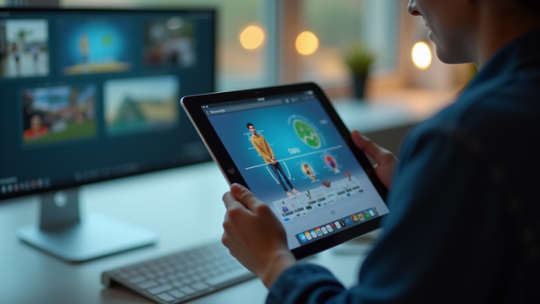
3. Software Development and Mobile App Creation
As the world becomes more mobile-first, demand for software and app development is expected to rise. Statista reports that the global app economy may generate over $407.31 billion in revenue by 2026, presenting a lucrative chance for techies skilled in coding.
Developers can enter this space through freelancing or by launching their own projects. Tools like React Native and Flutter allow for efficient cross-platform application development, saving both time and resources.
Freelancers can charge between $50 and $200 per hour based on expertise and project scope. For those willing to turn a side hustle into a full business, the income from app sales and in-app purchases can be enormous.
4. Data Analysis and Visualization
Data remains one of the most valuable assets today, with analytics aiding decision-making. The global data analytics market might reach $300 billion by 2026, creating fertile ground for techies skilled in data analysis.
Freelance data analysts can help companies extract valuable insights from their data. Utilizing tools like Tableau, Power BI, and R can help create compelling visualizations, making their services even more attractive.
Data analysts typically charge between $40 and $150 per hour depending on analysis complexity. Mastering data storytelling enables techies to transform raw data into practical insights, positioning themselves as key assets for businesses.
5. E-Learning Course Creation
The rapid growth of online learning has made creating and selling e-learning courses a sought-after side hustle. The global e-learning market is anticipated to reach $375 billion by 2026, driven by rising demand for skill development.
Techies can harness their knowledge to develop courses on platforms like Udemy or Teachable. Topics can range from programming languages to software tools and emerging technologies, such as AI and machine learning. Statista reported that 42% of online course creators are tech professionals, showing the market's strong bias toward technical education.
Successful courses can generate substantial passive income, sometimes yielding thousands of dollars. Since course creation has low overhead, techies can concentrate on producing high-quality content and devising effective marketing strategies.
Minimize image
Edit image
Delete image

Unlocking New Opportunities in Tech
The side hustles mentioned offer exciting paths for tech-savvy individuals aiming to enhance their skills and income in 2025.
As technology keeps evolving, the need for skilled professionals in IT support, cybersecurity, software development, data analysis, and e-learning will continue to grow.
By leveraging their expertise and using the right platforms, techies can build rewarding side hustles that provide financial perks and opportunities for personal and career growth.
Whether solving challenging problems for clients, creating innovative apps, or imparting knowledge, the potential for side hustles in the tech sector is vast. The key is to find a niche that aligns with personal interests, engage in continuous learning, and embrace the entrepreneurial spirit in this dynamic environment.
In a landscape where technology is at the center of everyday life, techies hold a unique position to lead future innovations. Engaging in these side hustles will not only keep them relevant but also equip them for the challenges and opportunities that lie ahead.
#TechSideHustles#RemoteITSupport#Cybersecurity#SoftwareDevelopment#DataAnalysis#MobileAppDevelopment#Elearning#Freelancing#TechEntrepreneur#FreelanceLife#TechProfessionals#FutureOfWork#TechOpportunities#DigitalTransformation#AI#DataVisualization#Coding#TechConsulting#OnlineLearning#CareerGrowth#TechSkills
2 notes
·
View notes
Text
Top 10 In- Demand Tech Jobs in 2025

Technology is growing faster than ever, and so is the need for skilled professionals in the field. From artificial intelligence to cloud computing, businesses are looking for experts who can keep up with the latest advancements. These tech jobs not only pay well but also offer great career growth and exciting challenges.
In this blog, we’ll look at the top 10 tech jobs that are in high demand today. Whether you’re starting your career or thinking of learning new skills, these jobs can help you plan a bright future in the tech world.
1. AI and Machine Learning Specialists
Artificial Intelligence (AI) and Machine Learning are changing the game by helping machines learn and improve on their own without needing step-by-step instructions. They’re being used in many areas, like chatbots, spotting fraud, and predicting trends.
Key Skills: Python, TensorFlow, PyTorch, data analysis, deep learning, and natural language processing (NLP).
Industries Hiring: Healthcare, finance, retail, and manufacturing.
Career Tip: Keep up with AI and machine learning by working on projects and getting an AI certification. Joining AI hackathons helps you learn and meet others in the field.
2. Data Scientists
Data scientists work with large sets of data to find patterns, trends, and useful insights that help businesses make smart decisions. They play a key role in everything from personalized marketing to predicting health outcomes.
Key Skills: Data visualization, statistical analysis, R, Python, SQL, and data mining.
Industries Hiring: E-commerce, telecommunications, and pharmaceuticals.
Career Tip: Work with real-world data and build a strong portfolio to showcase your skills. Earning certifications in data science tools can help you stand out.
3. Cloud Computing Engineers: These professionals create and manage cloud systems that allow businesses to store data and run apps without needing physical servers, making operations more efficient.
Key Skills: AWS, Azure, Google Cloud Platform (GCP), DevOps, and containerization (Docker, Kubernetes).
Industries Hiring: IT services, startups, and enterprises undergoing digital transformation.
Career Tip: Get certified in cloud platforms like AWS (e.g., AWS Certified Solutions Architect).
4. Cybersecurity Experts
Cybersecurity professionals protect companies from data breaches, malware, and other online threats. As remote work grows, keeping digital information safe is more crucial than ever.
Key Skills: Ethical hacking, penetration testing, risk management, and cybersecurity tools.
Industries Hiring: Banking, IT, and government agencies.
Career Tip: Stay updated on new cybersecurity threats and trends. Certifications like CEH (Certified Ethical Hacker) or CISSP (Certified Information Systems Security Professional) can help you advance in your career.
5. Full-Stack Developers
Full-stack developers are skilled programmers who can work on both the front-end (what users see) and the back-end (server and database) of web applications.
Key Skills: JavaScript, React, Node.js, HTML/CSS, and APIs.
Industries Hiring: Tech startups, e-commerce, and digital media.
Career Tip: Create a strong GitHub profile with projects that highlight your full-stack skills. Learn popular frameworks like React Native to expand into mobile app development.
6. DevOps Engineers
DevOps engineers help make software faster and more reliable by connecting development and operations teams. They streamline the process for quicker deployments.
Key Skills: CI/CD pipelines, automation tools, scripting, and system administration.
Industries Hiring: SaaS companies, cloud service providers, and enterprise IT.
Career Tip: Earn key tools like Jenkins, Ansible, and Kubernetes, and develop scripting skills in languages like Bash or Python. Earning a DevOps certification is a plus and can enhance your expertise in the field.
7. Blockchain Developers
They build secure, transparent, and unchangeable systems. Blockchain is not just for cryptocurrencies; it’s also used in tracking supply chains, managing healthcare records, and even in voting systems.
Key Skills: Solidity, Ethereum, smart contracts, cryptography, and DApp development.
Industries Hiring: Fintech, logistics, and healthcare.
Career Tip: Create and share your own blockchain projects to show your skills. Joining blockchain communities can help you learn more and connect with others in the field.
8. Robotics Engineers
Robotics engineers design, build, and program robots to do tasks faster or safer than humans. Their work is especially important in industries like manufacturing and healthcare.
Key Skills: Programming (C++, Python), robotics process automation (RPA), and mechanical engineering.
Industries Hiring: Automotive, healthcare, and logistics.
Career Tip: Stay updated on new trends like self-driving cars and AI in robotics.
9. Internet of Things (IoT) Specialists
IoT specialists work on systems that connect devices to the internet, allowing them to communicate and be controlled easily. This is crucial for creating smart cities, homes, and industries.
Key Skills: Embedded systems, wireless communication protocols, data analytics, and IoT platforms.
Industries Hiring: Consumer electronics, automotive, and smart city projects.
Career Tip: Create IoT prototypes and learn to use platforms like AWS IoT or Microsoft Azure IoT. Stay updated on 5G technology and edge computing trends.
10. Product Managers
Product managers oversee the development of products, from idea to launch, making sure they are both technically possible and meet market demands. They connect technical teams with business stakeholders.
Key Skills: Agile methodologies, market research, UX design, and project management.
Industries Hiring: Software development, e-commerce, and SaaS companies.
Career Tip: Work on improving your communication and leadership skills. Getting certifications like PMP (Project Management Professional) or CSPO (Certified Scrum Product Owner) can help you advance.
Importance of Upskilling in the Tech Industry
Stay Up-to-Date: Technology changes fast, and learning new skills helps you keep up with the latest trends and tools.
Grow in Your Career: By learning new skills, you open doors to better job opportunities and promotions.
Earn a Higher Salary: The more skills you have, the more valuable you are to employers, which can lead to higher-paying jobs.
Feel More Confident: Learning new things makes you feel more prepared and ready to take on tougher tasks.
Adapt to Changes: Technology keeps evolving, and upskilling helps you stay flexible and ready for any new changes in the industry.
Top Companies Hiring for These Roles
Global Tech Giants: Google, Microsoft, Amazon, and IBM.
Startups: Fintech, health tech, and AI-based startups are often at the forefront of innovation.
Consulting Firms: Companies like Accenture, Deloitte, and PwC increasingly seek tech talent.
In conclusion, the tech world is constantly changing, and staying updated is key to having a successful career. In 2025, jobs in fields like AI, cybersecurity, data science, and software development will be in high demand. By learning the right skills and keeping up with new trends, you can prepare yourself for these exciting roles. Whether you're just starting or looking to improve your skills, the tech industry offers many opportunities for growth and success.
#Top 10 Tech Jobs in 2025#In- Demand Tech Jobs#High paying Tech Jobs#artificial intelligence#datascience#cybersecurity
2 notes
·
View notes
Text
Top Trends in Software Development for 2025
The software development industry is evolving at an unprecedented pace, driven by advancements in technology and the increasing demands of businesses and consumers alike. As we step into 2025, staying ahead of the curve is essential for businesses aiming to remain competitive. Here, we explore the top trends shaping the software development landscape and how they impact businesses. For organizations seeking cutting-edge solutions, partnering with the Best Software Development Company in Vadodara, Gujarat, or India can make all the difference.
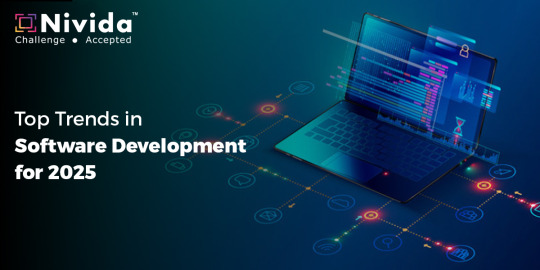
1. Artificial Intelligence and Machine Learning Integration:
Artificial Intelligence (AI) and Machine Learning (ML) are no longer optional but integral to modern software development. From predictive analytics to personalized user experiences, AI and ML are driving innovation across industries. In 2025, expect AI-powered tools to streamline development processes, improve testing, and enhance decision-making.
Businesses in Gujarat and beyond are leveraging AI to gain a competitive edge. Collaborating with the Best Software Development Company in Gujarat ensures access to AI-driven solutions tailored to specific industry needs.
2. Low-Code and No-Code Development Platforms:
The demand for faster development cycles has led to the rise of low-code and no-code platforms. These platforms empower non-technical users to create applications through intuitive drag-and-drop interfaces, significantly reducing development time and cost.
For startups and SMEs in Vadodara, partnering with the Best Software Development Company in Vadodara ensures access to these platforms, enabling rapid deployment of business applications without compromising quality.
3. Cloud-Native Development:
Cloud-native technologies, including Kubernetes and microservices, are becoming the backbone of modern applications. By 2025, cloud-native development will dominate, offering scalability, resilience, and faster time-to-market.
The Best Software Development Company in India can help businesses transition to cloud-native architectures, ensuring their applications are future-ready and capable of handling evolving market demands.
4. Edge Computing:
As IoT devices proliferate, edge computing is emerging as a critical trend. Processing data closer to its source reduces latency and enhances real-time decision-making. This trend is particularly significant for industries like healthcare, manufacturing, and retail.
Organizations seeking to leverage edge computing can benefit from the expertise of the Best Software Development Company in Gujarat, which specializes in creating applications optimized for edge environments.
5. Cybersecurity by Design:
With the increasing sophistication of cyber threats, integrating security into the development process has become non-negotiable. Cybersecurity by design ensures that applications are secure from the ground up, reducing vulnerabilities and protecting sensitive data.
The Best Software Development Company in Vadodara prioritizes cybersecurity, providing businesses with robust, secure software solutions that inspire trust among users.
6. Blockchain Beyond Cryptocurrencies:
Blockchain technology is expanding beyond cryptocurrencies into areas like supply chain management, identity verification, and smart contracts. In 2025, blockchain will play a pivotal role in creating transparent, tamper-proof systems.
Partnering with the Best Software Development Company in India enables businesses to harness blockchain technology for innovative applications that drive efficiency and trust.
7. Progressive Web Apps (PWAs):
Progressive Web Apps (PWAs) combine the best features of web and mobile applications, offering seamless experiences across devices. PWAs are cost-effective and provide offline capabilities, making them ideal for businesses targeting diverse audiences.
The Best Software Development Company in Gujarat can develop PWAs tailored to your business needs, ensuring enhanced user engagement and accessibility.
8. Internet of Things (IoT) Expansion:
IoT continues to transform industries by connecting devices and enabling smarter decision-making. From smart homes to industrial IoT, the possibilities are endless. In 2025, IoT solutions will become more sophisticated, integrating AI and edge computing for enhanced functionality.
For businesses in Vadodara and beyond, collaborating with the Best Software Development Company in Vadodara ensures access to innovative IoT solutions that drive growth and efficiency.
9. DevSecOps:
DevSecOps integrates security into the DevOps pipeline, ensuring that security is a shared responsibility throughout the development lifecycle. This approach reduces vulnerabilities and ensures compliance with industry standards.
The Best Software Development Company in India can help implement DevSecOps practices, ensuring that your applications are secure, scalable, and compliant.
10. Sustainability in Software Development:
Sustainability is becoming a priority in software development. Green coding practices, energy-efficient algorithms, and sustainable cloud solutions are gaining traction. By adopting these practices, businesses can reduce their carbon footprint and appeal to environmentally conscious consumers.
Working with the Best Software Development Company in Gujarat ensures access to sustainable software solutions that align with global trends.
11. 5G-Driven Applications:
The rollout of 5G networks is unlocking new possibilities for software development. Ultra-fast connectivity and low latency are enabling applications like augmented reality (AR), virtual reality (VR), and autonomous vehicles.
The Best Software Development Company in Vadodara is at the forefront of leveraging 5G technology to create innovative applications that redefine user experiences.
12. Hyperautomation:
Hyperautomation combines AI, ML, and robotic process automation (RPA) to automate complex business processes. By 2025, hyperautomation will become a key driver of efficiency and cost savings across industries.
Partnering with the Best Software Development Company in India ensures access to hyperautomation solutions that streamline operations and boost productivity.
13. Augmented Reality (AR) and Virtual Reality (VR):
AR and VR technologies are transforming industries like gaming, education, and healthcare. In 2025, these technologies will become more accessible, offering immersive experiences that enhance learning, entertainment, and training.
The Best Software Development Company in Gujarat can help businesses integrate AR and VR into their applications, creating unique and engaging user experiences.
Conclusion:
The software development industry is poised for significant transformation in 2025, driven by trends like AI, cloud-native development, edge computing, and hyperautomation. Staying ahead of these trends requires expertise, innovation, and a commitment to excellence.
For businesses in Vadodara, Gujarat, or anywhere in India, partnering with the Best Software Development Company in Vadodara, Gujarat, or India ensures access to cutting-edge solutions that drive growth and success. By embracing these trends, businesses can unlock new opportunities and remain competitive in an ever-evolving digital landscape.
#Best Software Development Company in Vadodara#Best Software Development Company in Gujarat#Best Software Development Company in India#nividasoftware
5 notes
·
View notes
Text
Introducing Surfboard Finance: Revolutionizing Blockchain Asset Management

Surfboard Finance: Revolutionizing the Future of Blockchain Asset Management
In the rapidly evolving landscape of blockchain technology, managing digital assets across multiple networks can be a complex and fragmented experience. Surfboard Finance has emerged as a game-changer, offering users a seamless and comprehensive platform to manage a diverse portfolio, from cryptocurrencies to NFTs, all within a unified interface.
Bridging the Gap in Blockchain Asset Management Blockchain enthusiasts and investors often face a significant hurdle: managing their assets spread across various networks. Each blockchain ecosystem, whether it’s Ethereum, Binance Smart Chain, or others, operates independently with its own protocols and systems. This decentralization, while innovative, creates silos that complicate asset management. Users are left juggling multiple platforms, wallets, and interfaces to track and analyze their assets, leading to inefficiencies and potential errors.
Surfboard Finance addresses these challenges head-on by aggregating data from various blockchains into one user-friendly platform. Its unique ability to provide a holistic view of assets in real-time empowers users to make well-informed decisions quickly. No more switching between wallets or interfaces – with Surfboard Finance, everything you need is at your fingertips.
The Power of AI in Blockchain
One of the standout features of Surfboard Finance is its use of AI-powered insights. In the volatile world of blockchain, timing and data-driven decisions are crucial. Surfboard's AI analyzes user portfolios and market trends, offering predictive analytics that help investors strategize effectively. This feature enhances user experience by delivering actionable insights, recommending when to buy, sell, or hold assets.
As blockchain ecosystems grow more complex, AI integration will be key in managing risk, identifying opportunities, and optimizing asset allocation. Surfboard Finance’s forward-thinking approach in this area solidifies its position as a leader in the blockchain space.
Empowering Users Through Decentralization
The ethos of decentralization remains a core principle for Surfboard Finance. Through its DAO (Decentralized Autonomous Organization) governance model, users have a direct say in the platform’s evolution. From proposing new features to voting on key decisions, Surfboard's community-driven approach empowers users to shape the future of the platform. This level of transparency and involvement fosters trust and enhances user engagement, setting Surfboard Finance apart from other platforms in the market.
Surfboard Finance’s Vision for the Future
Surfboard Finance’s roadmap is packed with exciting developments. As part of its vision for the future, the platform aims to introduce advanced analytics for deeper market insights, enhanced AI capabilities, and a mobile app for on-the-go portfolio management. Furthermore, multi-language support will expand its global reach, making blockchain asset management more accessible to users worldwide.
Strategic partnerships with key players in the blockchain and financial sectors are also on the horizon. These collaborations will enhance the platform’s capabilities and open up new opportunities for investors.
Conclusion
As blockchain technology continues to evolve, Surfboard Finance is leading the charge in simplifying and transforming asset management. By providing a unified platform with AI-driven insights, decentralized governance, and a clear vision for the future, Surfboard Finance is poised to revolutionize how users manage their digital assets.
Whether you're a seasoned blockchain investor or new to the space, Surfboard Finance offers a comprehensive solution for efficient and informed asset management.
Call to Action: Ready to take control of your blockchain assets with Surfboard Finance? Visit our website to learn more, stay updated on new features, and be part of the community shaping the future of blockchain asset management.
Website: www.surfboard.finance Twitter: @SurfboardFinance Telegram: Surfboard Finance Group
2 notes
·
View notes
Text
"Mobile Payment Systems: The Shift Towards a Cashless Society"
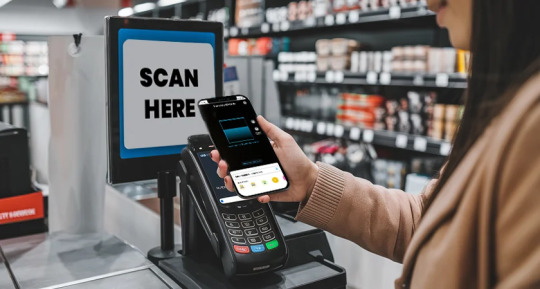
Cash is no longer the "King"! Cashless payments are a result of the complete change in the payment landscape brought about by the digital age.
Credit cards were the first form of cashless payment fintech innovations in the 1990s. The electronic banking system became widely used throughout that same decade. The developments in cashless payments carried on after that.
Well-known brands like Apple Pay and PayPal entered the fintech innovations scene. Plus, nobody likes to carry cash these days. Everyone wishes to gain from cashless transactions. Though cash is still important in many places, the globe is gradually shifting to cashless transactions.
There has been an increase in cashless transactions worldwide, according to the most recent Statista survey. There will be 2297 billion cashless transactions worldwide by 2027. The statistics above demonstrate the exponential rise of cashless transactions.
Mobile Payment Systems: The Shift Towards a Cashless Society
Globally, cashless transactions are growing increasingly typical as card and digital payments spread. Digital payment methods like debit and credit cards, smartphone payment apps, and others are increasingly popular for everyday transactions around the world.
Contactless payments, such as digital wallets and tap-to-pay cards, have become increasingly popular. The COVID-19 pandemic further accelerated this trend due to the perceived safety of contactless payments. Mobile payment systems like Apple Pay and Google Pay have made it even easier to make cashless transactions resulting in an e-commerce growth. Global digital transactions are predicted to reach over $14 trillion by 2027. Scandinavian countries like Sweden and Norway have already reached a cashless point-of-sale transaction rate of over 90%. In Asia, mobile payments are rapidly growing, with China leading the way through services like WeChat Pay and Alipay e-commerce growth. However, cash is still preferred in some regions due to factors like informal economies, limited access to banking services, and mistrust of financial institutions. Overall, more and more people are embracing digital payments for their convenience and expanding possibilities. Efforts are being made by governments and financial organizations to support this shift while considering the needs of all individuals.
What Are Digital Wallets, and How Do They Work?
Due to the pandemic, contactless payments like digital wallets have become very popular. Digital wallets store payment methods for easy purchases using a smartwatch or smartphone. They can also hold coupons, tickets, and cards and allow money transfers to others.
How digital wallets work
Different digital wallets process payments using various technologies:
NFC stands for near-field communication: If two devices are positioned adjacent to one another, this enables information sharing between them. This technology is used by Google Pay and Apple Pay. The retailer needs to have card readers that are compatible with these digital wallets at the point of sale.
MST stands for magnetic secure transmission: Similar to when a credit card is swiped on its magnetic stripe, this produces a magnetic signal. The card reader at the payment terminal receives the signal. NFC and MST technologies are both used by Samsung Pay.
QR codes: You may use the camera on your smartphone to scan these barcodes for secure transactions. For instance, you can create a QR code using the PayPal app that enables you to pay for items in stores using your account.
Some digital wallets, such as the Starbucks app, are "closed," meaning they can only be used at that particular store. In contrast, the digital wallet examples above can be used at any retailer that accepts them.
The Technology Behind Mobile Payments
The manner in which consumers make payments around the world has been drastically changed by mobile payment technologies. The fundamental technologies that make this possible are:
NFC:With this technique, data may be exchanged through secure transactions between two devices that are positioned just a few centimeters apart. NFC facilitates rapid and safe transactions by enabling smartphones and payment terminals to communicate.
QR codes:To start a transaction, customers can use the camera on their smartphone to scan "quick-response" codes. The codes point the user to a website or payment application when they are scanned.
SMS-based transactions:Businesses can use this technique to send text message instructions for payments, which is especially helpful in areas where smartphone adoption is low. A series of text messages, including a confirmation code at the conclusion of the transaction, are used by customers to complete purchases.
Digital wallets:In order to enable customers to make payments using their phones rather than paper cards, digital wallets securely hold credit card information on a mobile device. Transport tickets, vouchers, and loyalty cards can all be kept in digital wallets.
Encryption and tokenization:In mobile payments, sensitive data is encrypted. Further enhancing security is tokenization, which uses a special digital identification (called a "token") to execute payments without disclosing account information.
Biometric verification:Mobile devices frequently come equipped with biometric sensors, like facial recognition or fingerprint scanners, which add an extra degree of security to transactions.
Cloud-based payments:Payment details are kept on cloud servers by certain mobile payment solutions. Payments are accepted from any device, and unified security management is in place.
Host card emulation (HCE):With an NFC-capable device, HCE enables a phone to function as a physical card without depending on access to a secure element, or chip, which holds private information like credit card numbers.
Application programming interfaces (APIs):APIs allow apps to talk to banking systems and other applications, which makes transactions easier.
Thanks to these technologies, consumers can now use their mobile devices for a wide range of payment-related tasks, such as online shopping, paying for goods and services at physical locations, and transferring money between people.
Cryptocurrency Transactions: A New Frontier in Mobile Payments
The number of people who own bitcoin is growing rapidly, with over 400 million worldwide. This has led to an increase in demand for cryptocurrency payment options in everyday life. Starting a cryptocurrency transaction is easy, as users can simply use their mobile crypto wallet app to send payments to vendors. Specialized payment gateways are also available, which allow businesses to accept cryptocurrency and convert it to regular money quickly. By accepting cryptocurrency payments, businesses can reach a larger customer base and increase their revenues. Many companies, including e-commerce stores, gaming platforms, and Forex platforms, are already accepting bitcoin payments. The best part is that bitcoin payments are faster and cheaper than traditional banking methods.
Advantages of Using Mobile Payment Systems
Advantages of widely used Mobile banking:
Reduce expenses by eliminating costly equipment and setup.
Improve cash flow with faster payments.
Easily integrate loyalty programs for repeat purchases.
Gain insights from customer data for personalized strategies.
Increase customer convenience by accepting payments anytime, anywhere.
Stay competitive by offering multiple payment options.
Mobile banking enhances payment security with encrypted codes.
Simplify bookkeeping with collected business information.
These benefits improve the customer experience and make accepting payments on the go easier.
Conclusion:
The future of payments will undoubtedly revolve around preserving the integrity of cash as a viable payment option, while concurrently expanding and enhancing digital payment solutions. Empowering individuals to select their preferred transaction method based on personal circumstances and preferences is of utmost importance. In order to construct an all-encompassing financial system that caters to the requirements of every participant, it is imperative for businesses, policymakers, and financial institutions to establish resilient digital payment systems alongside a sturdy infrastructure for cash.
FAQ:
What are mobile payment systems?
Mobile payment systems allow you to make payments using your smartphone or mobile device, typically through apps or digital wallets like Apple Pay or Google Wallet.
How secure are mobile payment systems?
Mobile payment systems are generally secure, using encryption, tokenization, and biometric authentication to protect your data. However, security also depends on user practices like keeping your device and apps updated.
What are the benefits of using mobile payment systems?
Mobile payment systems offer convenience, speed, and security. They also support contactless payments, track spending, and often integrate with loyalty programs.
How do mobile payments impact global economies?
Mobile payments boost global economies by increasing financial inclusion, speeding up transactions, and supporting digital commerce, especially in emerging markets.
What technologies are driving the growth of mobile payment systems?
Key technologies include Near Field Communication (NFC), QR codes, biometric authentication, and blockchain, all of which enhance security and convenience in mobile payments.
5 notes
·
View notes
Text
Enhancing User Experience in Saudi Mobile Apps with AI

In the current digital environment, the triumph of mobile applications is deeply rooted in their user experience (UX). With the rise of artificial intelligence (AI), mobile apps are becoming more intelligent, responsive, and personalized. In Saudi Arabia, where the digital economy is rapidly expanding, integrating AI into mobile app development is not just a trend—it's a necessity. This article delves into how AI is enhancing user experience in Saudi mobile apps, exploring the benefits, challenges, and future prospects.
1. The Role of AI in Mobile App Development
Artificial intelligence (AI) has transformed numerous sectors, and mobile app development is certainly among them. In the context of user experience, AI plays a pivotal role in making apps more intuitive, efficient, and tailored to individual user needs. Whether it's through predictive analytics, natural language processing, or machine learning algorithms, AI enhances every aspect of the user journey.
1.1 Predictive Analytics for Personalized Experiences
One of the key advancements AI has brought to mobile app development is predictive analytics. By analyzing user data, AI can predict future behavior and preferences. This allows apps to offer personalized recommendations, content, and services, thereby improving user engagement and satisfaction.
1.2 Natural Language Processing for Better Interaction
Natural Language Processing (NLP) enables apps to understand and respond to user queries in a more human-like manner. In Saudi Arabia, where Arabic is the primary language, NLP can be particularly beneficial in providing seamless communication between the app and the user. By understanding the nuances of the Arabic language, AI can enhance the overall interaction quality.
1.3 Machine Learning for Continuous Improvement
Machine learning algorithms enable apps to learn from user interactions and continuously improve over time. This means that the more a user interacts with an app, the better the app becomes at meeting their needs. For businesses in Saudi Arabia, this translates to higher customer retention rates and increased loyalty.
2. The Importance of UX in Saudi Arabia's Digital Economy
Saudi Arabia is undergoing a digital transformation, with a significant focus on enhancing the digital economy. Mobile apps are at the forefront of this transformation, serving as key platforms for e-commerce, banking, entertainment, and more. In such a competitive market, delivering a superior user experience is crucial for success.
2.1 User-Centric Design: The Key to Success
A user-centric design approach is essential for creating apps that resonate with the target audience. In Saudi Arabia, this means considering cultural nuances, language preferences, and the unique needs of the local population. By integrating AI into the design process, developers can create apps that are not only functional but also emotionally engaging.
2.2 The Impact of AI on User-Centric Design
AI can analyze vast amounts of data to identify user pain points and preferences. This information can then be used to design more intuitive interfaces, streamline navigation, and offer features that align with user expectations. For example, AI can propose design modifications based on user feedback, ensuring the app stays relevant and user-friendly.
3. AI-Driven Personalization: A Game Changer for User Engagement
Modern user experiences are deeply rooted in personalization. With AI, mobile apps can deliver highly personalized experiences that keep users engaged and satisfied. From personalized content recommendations to tailored notifications, AI-driven personalization is a game changer for user engagement.
3.1 Personalized Content Recommendations
AI-driven algorithms can assess user behavior to suggest content tailored to their preferences. This is particularly valuable in entertainment apps, where users are more likely to engage with content that resonates with them. In Saudi Arabia, where digital content consumption is on the rise, personalized recommendations can significantly enhance user experience.
3.2 Tailored Notifications for Better Engagement
Notifications are a powerful tool for keeping users engaged with an app. However, generic notifications may often be seen as intrusive. AI can help by sending tailored notifications based on user behavior and preferences. This ensures that users receive relevant updates that add value to their experience.
4. Enhancing Mobile App Security with AI
Security is a top concern for mobile app users, especially when it comes to sensitive information such as financial data. AI can enhance mobile app security by detecting and preventing threats in real-time, providing users with a safer experience.
4.1 AI-Powered Fraud Detection
AI can analyze patterns in user behavior to detect fraudulent activities. For example, if an unusual transaction is detected, the app can alert the user and take preventive measures. This is particularly important for financial apps in Saudi Arabia, where trust and security are paramount.
4.2 Ensuring Data Privacy with AI
Data privacy is a significant concern in the digital age. AI can help ensure that user data is handled securely by monitoring data access and usage. By integrating AI into mobile app development, businesses can build trust with their users by demonstrating a commitment to data privacy.
5. The Future of AI in Saudi Mobile Apps
The outlook for AI in mobile app development in Saudi Arabia is exceptionally promising. As AI technology continues to evolve, we can expect even more innovative solutions that enhance user experience.
5.1 AI and Augmented Reality (AR) Integration
One of the most thrilling advancements is the potential for combining AI with augmented reality (AR). This integration promises to create more immersive and interactive experiences by blending digital information with the physical world in real time. This combination can create immersive experiences that blend the digital and physical worlds. For example, AI-powered AR apps can offer personalized shopping experiences, allowing users to virtually try on products before making a purchase.
5.2 Voice-Activated Apps Powered by AI
Voice-activated apps are becoming increasingly popular, thanks to advancements in AI and NLP. In Saudi Arabia, where voice assistants like Siri and Google Assistant are widely used, integrating voice activation into mobile apps can enhance accessibility and user convenience.
Conclusion
AI is transforming the landscape of mobile app development in Saudi Arabia, offering new opportunities to enhance user experience. From personalized content recommendations to advanced security features, AI-driven apps are better equipped to meet the evolving needs of users. As the digital economy in Saudi Arabia continues to grow, businesses that leverage AI in their mobile apps will be well-positioned to succeed in this competitive market.
FAQs
1. How does AI improve user experience in mobile apps?
AI enhances user experience by personalizing content, improving app security, and enabling more intuitive interactions.
2. Why is user-centric design important in Saudi mobile apps?
User-centric design ensures that the app meets the unique needs and preferences of the local population, leading to higher user satisfaction.
3. How can AI enhance mobile app security?
AI can detect and prevent security threats in real-time, ensuring that user data is protected.
4. What is the future of AI in mobile apps?
The future of AI in mobile apps includes the integration of augmented reality and voice activation, offering even more immersive and accessible experiences.
5. Why is personalization important in mobile apps?
Personalization keeps users engaged by delivering content and notifications that align with their interests and preferences.
#AI in Saudi mobile apps#User experience optimization#Saudi Arabia mobile UX#AI-powered app features#Mobile app development Saudi Arabia#AI for app user engagement#Saudi mobile apps AI integration#AI-driven UX improvements#Enhancing mobile app usability#AI technology in Saudi apps#AI for better app performance#Mobile user experience AI#AI-based app customization#Advanced AI in mobile apps#AI innovation in Saudi apps
2 notes
·
View notes
Text
Top 10 Business Ideas That Will Make You Rich

In today's fast-paced and ever-evolving world, entrepreneurship offers countless opportunities to build wealth. Whether you're a seasoned entrepreneur or a budding innovator, exploring the right business idea can lead to significant financial success. Here are ten business ideas that have the potential to make you rich.
1. E-commerce Store
E-commerce continues to thrive, with online shopping becoming the norm for consumers. Launching an e-commerce store that caters to a niche market can be incredibly profitable. By offering unique, high-quality products, and leveraging digital marketing strategies, you can reach a global audience. Subscription boxes, eco-friendly products, or personalized items are examples of niches with high demand.
2. Digital Marketing Agency
As businesses shift towards online operations, the demand for digital marketing services has skyrocketed. Starting a digital marketing agency that specializes in SEO, social media management, content marketing, or pay-per-click advertising can be highly lucrative. Success in this field requires staying updated with the latest trends and delivering measurable results to clients.
3. App Development
The mobile app industry is booming, with millions of apps available on various platforms. If you have a background in coding or can collaborate with skilled developers, creating innovative apps can lead to substantial profits. Whether it's a gaming app, a productivity tool, or a social networking platform, a successful app can generate revenue through in-app purchases, ads, or subscriptions.
4. Real Estate Investment
Real estate has long been a proven way to build wealth. Investing in rental properties, flipping houses, or even starting a real estate development company can yield high returns. The key is to research markets thoroughly, understand property values, and manage your investments wisely. In addition to traditional real estate, consider emerging trends like vacation rentals and co-living spaces.
5. Health and Wellness Products
The health and wellness industry is experiencing rapid growth, driven by an increased focus on healthy living. Starting a business that offers health supplements, organic foods, fitness equipment, or wellness coaching can be very profitable. Consumers are willing to invest in products and services that promote a healthier lifestyle, making this sector a promising area for entrepreneurs.
6. Online Education and E-learning
The rise of remote work and online learning has created a massive demand for e-learning platforms and online courses. If you have expertise in a particular field, you can create and sell online courses, or develop a platform that connects educators with learners. This business model offers scalability and the potential for passive income, as courses can be sold repeatedly without additional production costs.
7. Renewable Energy Solutions
With the global push towards sustainability, businesses in the renewable energy sector are thriving. Starting a company that offers solar panel installation, energy-efficient appliances, or green building materials can be highly profitable. Governments and consumers are increasingly seeking eco-friendly solutions, making this an ideal time to enter the market.
8. Freelance Services Platform
The gig economy is expanding rapidly, with more people seeking freelance opportunities. Creating a platform that connects freelancers with clients in fields like graphic design, writing, programming, or virtual assistance can be a successful business venture. By charging a commission on transactions, you can build a profitable business while providing a valuable service.
9. Artificial Intelligence and Automation
AI and automation are transforming industries across the board. Starting a business that offers AI-driven solutions, such as chatbots, predictive analytics, or robotic process automation (RPA), can lead to significant wealth. Companies are eager to adopt AI technologies to streamline operations, reduce costs, and improve customer experiences, making this a high-demand area.
10. Subscription Box Service
Subscription box services have gained immense popularity, offering consumers curated products delivered to their doorsteps regularly. From beauty products to gourmet foods, subscription boxes cater to a wide range of interests. Starting a subscription box business allows for recurring revenue and customer loyalty, provided you offer unique and valuable products.
For more such content visit on Tanishq website .
Conclusion
These ten business ideas represent some of the most promising opportunities for building wealth in today's economy. While each requires a different level of expertise, investment, and commitment, the potential rewards are substantial. Success in any of these ventures will depend on thorough market research, innovative thinking, and relentless execution. By choosing the right idea and dedicating yourself to its growth, you can achieve significant financial success and long-term wealth. Click here to open other post.
2 notes
·
View notes
Text
AI App Development in Arizona: Top Features, Trends, and Cost Breakdown

At Net-Craft.com, a leading mobile app development company in Scottsdale, Arizona, we're constantly innovating and pushing the boundaries of what's possible. One of the most exciting frontiers in mobile app development is the integration of Artificial Intelligence (AI). AI is transforming industries worldwide, and Arizona is no exception.
This blog post dives deep into the world of AI app development in Arizona. We'll explore the top features and trends shaping the future of mobile apps, as well as provide a breakdown of the costs involved. Whether you're a seasoned business owner or just starting, this information will equip you to make informed decisions about incorporating AI into your mobile app strategy.
Why Choose AI App Development in Arizona?
Arizona boasts a vibrant tech scene with a growing pool of talented AI engineers and developers. This, coupled with a business-friendly environment, makes Arizona an ideal location to develop your next AI-powered mobile app. Here are some additional benefits:
Access to cutting-edge technology: Arizona universities are at the forefront of AI research, providing access to the latest advancements and talent.
Cost-effectiveness: Compared to major tech hubs, development costs in Arizona can be more reasonable while still offering top-notch expertise.
Thriving tech ecosystem: Arizona fosters a collaborative environment where businesses can connect with AI specialists and investors.
Top Features of AI-powered Mobile Apps
AI offers a vast array of functionalities that can elevate your mobile app. Here are some of the most popular features:
Machine Learning (ML): Enables your app to learn from user behavior and adapt accordingly. Imagine a fitness app that recommends personalized workout routines based on your progress and goals.
Natural Language Processing (NLP): Allows users to interact with your app using natural language, such as voice commands or chatbots. This can improve accessibility and streamline user experience. Think of a travel app that uses voice commands to book your hotel or suggest restaurants based on your preferences.
Computer Vision: Empowers your app to analyze visual data. This could involve facial recognition for secure logins, object recognition for product identification in an e-commerce app, or image segmentation for photo editing purposes.
Predictive Analytics: Analyzes user data to anticipate future needs and preferences. This helps businesses optimize their offerings and target promotions more effectively. A retail app might use this to recommend products based on past purchases or browsing patterns.
Trending AI Developments in Mobile Apps
The mobile app landscape with AI is constantly evolving. Here are some of the hottest trends to keep an eye on:
Augmented Reality (AR) and Virtual Reality (VR) with AI: AI can further enhance AR and VR experiences. Imagine a furniture app using AR to show how a piece of furniture would look in your home, or a real estate app using VR to give virtual tours of properties.
Hyper-personalization: AI will continue to refine user experiences by personalizing content and recommendations to an even greater degree.
Focus on Security and Privacy: As AI becomes more sophisticated, so too will the need for robust security measures to protect user data. Secure storage, encryption, and transparent data usage policies will be crucial.
Cost Breakdown of AI App Development in Arizona
Developing an AI-powered mobile app requires investment in various areas. Here's a breakdown of the main cost factors:
Project Scope and Complexity: The features and functionality you choose will directly impact costs. A basic app with simple AI functions will be less expensive than a complex app with advanced features.
Data Acquisition and Training: The amount and quality of data required to train your AI model can be a significant cost factor. Depending on your needs, you might need to collect and clean data, or purchase existing datasets.
Development Team Expertise: Hiring skilled AI developers comes at a premium. However, their expertise ensures a high-quality, efficient app. Consider partnering with an established mobile app development company in Arizona with a strong track record in AI integration.
Cloud Infrastructure and Maintenance: AI applications often require powerful cloud computing resources to handle data processing and model training.
It's important to note that costs can vary significantly. For a basic AI app developed in Arizona, you might expect a range of $30,000 to $70,000. For a complex app with advanced features, the cost could escalate to $150,000 or even higher.
How Net-Craft.com Can Help You Develop Your AI App
At Net-Craft.com, we have a team of experienced mobile app developers who are passionate about AI integration. We offer comprehensive AI app development services in Arizona, from initial concept to final deployment. Here's what sets us apart:
Deep Expertise in AI: Our team stays updated with the latest advancements in AI and machine learning. We can help you leverage these technologies to build cutting-edge apps.
Customized Solutions: We understand that every project is unique. We work closely with you to tailor our services to your specific needs and goals.
Focus on User Experience: We prioritize creating intuitive and engaging user experiences, ensuring your app resonates with your target audience.
Rigorous Testing and Quality Assurance: We conduct thorough testing to guarantee that your app functions flawlessly and delivers a seamless user experience.
Data Security and Compliance: We prioritize the security of your data and your users' data. We adhere to industry best practices and comply with relevant data protection regulations.
Ready to Embrace the Future of App Development?
By leveraging AI, you can create truly innovative and impactful mobile apps. Let's work together to turn your vision into a reality.
Contact Net-Craft.com today to schedule a consultation and explore how AI can transform your app development project.
Know more https://www.net-craft.com/blog/2024/12/15/ai-app-development-arizona-features-trends-cost/
#ai app development in Arizona#ai in mobile apps#mobile app development arizona#ai app development services arizona#mobile app development services arizona#custom ai app development
1 note
·
View note
Text
🌟 Embracing the Future of Mobile App Development 🌟
Hey Tumblr fam! 📱✨ As we dive into 2024, the world of mobile app development is buzzing with exciting trends that are shaping the way we interact with technology. Here’s a glimpse into what’s on the horizon:
AI & Machine Learning: Apps are getting smarter, thanks to AI and ML, offering personalized experiences and predictive insights.
5G Revolution: With 5G, expect faster speeds and enhanced capabilities for apps, paving the way for immersive AR, VR, and IoT applications.
Cross-Platform Development: Tools like Flutter and React Native make it easier to develop apps that work seamlessly across different devices and platforms.
AR & VR Experiences: From virtual shopping to interactive gaming, AR and VR are transforming how users engage with apps.
Blockchain Integration: Enhancing security and transparency in mobile apps through decentralized solutions.
IoT Connectivity: Apps that connect with smart devices, offering seamless control and monitoring.
Progressive Web Apps (PWAs): Combining the best of web and mobile apps for a responsive and engaging user experience.
Enhanced Mobile Security: Biometric authentication, encryption, and secure APIs to protect user data.
Wearable Tech Integration: Apps that sync with smartwatches and fitness trackers, offering personalized health insights.
Voice-Activated Interfaces: Hands-free interaction with apps through virtual assistants like Siri and Alexa.
💡 Want to dive deeper into the world of mobile app development? Check out this insightful article on Warticles.com. It covers the top 10 key features to consider when choosing the best mobile app builder.
And if you’re thinking of building your own app, explore MageNative- Mobile App Builder on Shopify! It’s packed with features to streamline your development process.

Stay tuned for more updates and insights on technology trends. Follow for the latest in mobile app development and beyond! 📲💬
2 notes
·
View notes
Text
How Indian Mobile App Development Companies Are Revolutionizing Healthcare Apps
Mobile app development companies in India have become significant players in the global healthcare technology arena. With a keen focus on innovation and patient-centric solutions, these firms are transforming the way healthcare services are delivered and managed.
Let’s explore how Mobile app developers in India are revolutionizing healthcare apps through groundbreaking innovations and emerging trends.
1. Telemedicine and Remote Consultations
One of the most transformative innovations in healthcare apps is telemedicine. Mobile app development company in India have been at the forefront of creating platforms that facilitate remote consultations between patients and healthcare professionals. These apps enable users to connect with doctors via video calls, voice calls, or chat, breaking down geographical barriers and increasing access to medical care. By integrating features like real-time video consultations, electronic prescriptions, and patient records, these apps are making healthcare more accessible, especially in rural and underserved areas.
2. AI-Powered Diagnostics and Personalized Health Monitoring
Artificial Intelligence (AI) has become a game-changer in healthcare app development. Indian companies are leveraging AI to create apps that offer personalized health monitoring and diagnostics. For example, AI algorithms can analyze medical images, detect abnormalities, and provide preliminary diagnostic information. These apps can also track vital signs, such as heart rate and blood glucose levels, and offer personalized health recommendations based on the data collected. This not only enhances the accuracy of diagnoses but also empowers patients to manage their health proactively.
3. Integrated Health Records and Data Management
Managing and accessing health records can be a cumbersome process. Indian app developers are addressing this issue by creating integrated health record management systems. These apps allow patients to store, access, and share their medical history, lab results, and treatment plans securely. By integrating data from various sources, such as hospitals, clinics, and diagnostic centers, these apps provide a comprehensive view of a patient’s health, improving coordination among healthcare providers and ensuring continuity of care.
4. Health and Wellness Apps for Chronic Disease Management
Chronic disease management is a critical area where mobile apps are making a significant impact. Indian developers are creating apps specifically designed to help patients manage chronic conditions like diabetes, hypertension, and asthma. These apps offer features such as medication reminders, symptom tracking, and lifestyle recommendations. By incorporating educational content, goal-setting tools, and real-time data tracking, these apps support patients in maintaining their health and adhering to treatment plans.
5. Health Analytics and Predictive Modeling
Predictive analytics is another area where Indian mobile app developers are making strides. By analyzing large sets of health data, these apps can identify patterns and trends that help predict potential health issues before they arise. For example, predictive models can assess the likelihood of developing certain conditions based on a patient’s lifestyle, genetics, and medical history. In the end, this proactive strategy improves patient outcomes and lowers healthcare costs by enabling early intervention and preventive measures.
6. Blockchain for Enhanced Security and Privacy
Security and privacy are paramount in healthcare apps, and Indian developers are addressing these concerns by incorporating blockchain technology. Blockchain provides a decentralized and immutable ledger for storing health records, ensuring that patient data is secure and tamper-proof. This technology also facilitates transparent and secure sharing of medical information between patients and healthcare providers, enhancing trust and data integrity.
7. Virtual Health Assistants and Chatbots
Virtual health assistants and chatbots are becoming increasingly popular in healthcare apps. Mobile app development company in India are integrating these AI-powered tools to provide users with instant access to health information, appointment scheduling, and medication reminders. Chatbots can also assist with symptom assessment and direct users to appropriate healthcare services, improving the overall patient experience and streamlining administrative processes.
8. Wearable Integration and IoT
Another trend that's revolutionising healthcare apps is the combination of Internet of Things (IoT) technology with wearable devices. Indian developers are creating apps that sync with wearables like smartwatches and fitness trackers to monitor health metrics in real time. This integration allows for continuous health monitoring, early detection of potential issues, and personalized feedback based on the data collected from wearable devices.
9. Mental Health and Well-being Apps
Addressing mental health through mobile apps is a growing focus for Indian developers. Apps designed to support mental well-being offer features such as mood tracking, meditation exercises, and access to mental health resources. By providing users with tools to manage stress, anxiety, and depression, these apps contribute to overall mental wellness and offer support in a convenient and accessible format.
10. Advanced User Interfaces and Experience Design
Healthcare apps must have good user experience (UX) design, and Indian businesses are doing a great job of developing logical and user-friendly user interfaces. By focusing on UX design, these apps ensure that users can easily navigate through various features, access information, and manage their health effectively. Enhanced user interfaces contribute to higher engagement and satisfaction, making it easier for patients to utilize the app’s full potential.
Mobile app development company in India are at the forefront of revolutionizing healthcare through innovative solutions and emerging trends. By leveraging technologies such as AI, blockchain, and wearable integration, these firms are enhancing healthcare delivery, improving patient outcomes, and making healthcare more accessible and efficient. As technology continues to evolve, we can expect Indian developers to remain key contributors to the advancement of healthcare apps on a global scale.
1 note
·
View note
Text
Tourism Market: Trends, Growth, and Industry Players
Introduction
The global tourism market is a dynamic sector that continually evolves in response to changing consumer preferences, technological advancements, and global events. As we delve into the current landscape, it is crucial to explore the tourism market size, growth patterns, industry trends, and key players that shape the sector's trajectory.
Tourism Market Size and Growth
The tourism market has witnessed remarkable growth over the past decade. According to the latest data the global international tourist arrivals reached 1.5 billion in 2022, marking a 4% increase from the previous year. The tourism industry's robust growth is attributed to factors such as increased disposable income, improved connectivity, and a growing middle class in emerging economies.

The COVID-19 pandemic, however, significantly impacted the industry in 2020 and 2021. International tourist arrivals plummeted by 74% in 2020, representing the largest decline in the industry's history. As the world recovers from the pandemic, tourism is experiencing a resurgence. The UNWTO estimates that international tourist arrivals will surpass pre-pandemic levels by 2023, emphasizing the sector's resilience.
Tourism and Hospitality Industry Trends
The tourism and hospitality industry is undergoing transformative changes driven by technological advancements and shifting consumer behaviors. One notable trend is the rise of sustainable tourism. Travelers are increasingly prioritizing destinations and businesses that adopt eco-friendly practices. Hotels, airlines, and tour operators are responding by implementing sustainable initiatives to meet the demands of environmentally conscious travelers.
Another trend shaping the industry is the integration of technology. From mobile apps for seamless bookings to virtual reality experiences, technology is enhancing the overall travel experience. The use of artificial intelligence and big data analytics is also becoming prevalent, enabling businesses to personalize services, predict consumer preferences, and optimize operations.
Tourism Industry Players
The tourism market is comprised of a diverse range of players, including governments, international organizations, tour operators, airlines, hotels, and online travel agencies (OTAs). Notable industry players such as Airbnb, Expedia, and Booking. com have disrupted traditional hospitality models, offering travelers a wide array of accommodation options and personalized experiences.
Governments play a crucial role in shaping the tourism landscape through policies, infrastructure development, and destination marketing. Collaborations between public and private sectors are essential to foster sustainable growth and address challenges such as over-tourism and environmental impact.

Tourism Market Analysis
A comprehensive analysis of the tourism market involves assessing key factors such as market dynamics, competitive landscape, and regulatory environments. The Asia-Pacific region has emerged as a powerhouse in the tourism sector, with countries like China, India, and Japan experiencing substantial growth. In contrast, established destinations in Europe and North America continue to attract millions of tourists annually.
The post-pandemic recovery has prompted a shift in travel preferences, with a surge in demand for domestic and outdoor experiences. Travelers are seeking off-the-beaten-path destinations, contributing to the diversification of the tourism market.
Travel and Tourism Industry Outlook
Looking ahead, the outlook for the travel and tourism industry is optimistic. The industry is expected to rebound strongly, driven by pent-up demand, increased vaccination rates, and the easing of travel restrictions. The global tourism market is projected to reach $11.38 trillion by 2027, growing at a CAGR of 6.1% from 2020 to 2027.
In conclusion, the tourism market is a vibrant and resilient sector that continues to adapt to changing circumstances. Understanding the market size, growth trends, industry players, and emerging dynamics is crucial for stakeholders navigating the evolving landscape. As the world reopens for travel, the industry's ability to innovate and embrace sustainable practices will play a pivotal role in shaping its future success.
#market research#business#ken research#market analysis#market report#market research report#travel and tourism sector#travel and tourism market#travel and tourism industry#tourism sector#tourism market trends#tourism market size#tourism market players#tourism market forecast
2 notes
·
View notes
Text
Knock knock, KaiOS.
The ephemeral taste of innovating nearly obsolete bricks might be reaching its inevitable demise.

Nokia 8110 4G displayed in a kiosk at Mobile World Congress 2018. Image courtesy of Kārlis Dambrāns.
Despite the recent boom of feature phone sales over digital minimalism and dopamine detox trends, the future for KaiOS remains bleak as they fail to be consistent with their promises, thus miserably lagging against established giants in the market.
The good start
KaiOS is a partially open-source operating system developed by the Hong Kong-based company, KaiOS Technologies Inc. It was initially released in October 2017 and was forked from Boot 2 Gecko. Their name is from the Chinese for open – 开 (kāi) which “captures the idea of being inclusive.”
In just one year, they have overtaken Apple’s iOS as the second most popular operating system in India, with Android remaining on top, despite losing their 9% market share. In that same timeframe as well, they managed to sell around 450 million devices worldwide. Furthermore, their platform is compatible to WhatsApp, Twitter, YouTube, Google Maps, and Google Assistant.
To oversimplify things, KaiOS took the Boot 2 Gecko code (based from FirefoxOS) and modified it to run on hardware similar to that of feature phones and added the KaiOS Store. Other than that, they also implemented recent innovations that are becoming today’s standard, like 4G LTE and 5G, GPS, and Wi-Fi. By doing so, they effectively just created a separate phone segment, which some people call as the quasi-smartphones or smart feature phones.
KaiOS specifically chose the hardware present in their devices for an appealing approach to developing markets, like India and Pakistan, to bridge the digital divide and bring cheaper internet access. They removed the touch screen which they consider as the most costly part of the device, and replaced it with a cheaper T9 keypad input. Additionally, their devices only need 256MB to work and are also compatible with cost-efficient Spreadtrum chipsets.
What went wrong
By doing so, they effectively avoided the mistakes that Mozilla made. They chose a target audience first and offered them a product. They made an operating system out of the web but used that as a tool rather than the end goal, the latter being their approach to the digital divide. But not all products are perfect on their own, as their approach is a double-edged sword.
The T9 keypad meant that the apps had to be optimized to work on such inputs. Likewise, dissimilar to FirefoxOS, not all webpages can run on KaiOS devices due to hardware restraints. Such disadvantages make it an appealing short-term solution while their users save up for better entry-level Android devices.
Platform immaturity
The platform is still quite immature, despite five years since its initial launch. Some users claimed that their devices sometimes cannot receive calls, and crashes on related functions constantly. The battery also does not live up to its expectations and provides a ‘disappointing’ performance. Additionally, the calendar’s sync and date functionality is unstable, the alarm clock doesn’t ring from time to time, and the lack of note-taking, file browsing, multitasking, and wide audio format support. Besides, the platform lacked proper app quality control, bug reports, and feedback system, along with a slew of advertisements. Perhaps, the most lambasted functionality of the platform is the T9 input. Users characterized the input as slow and unreliable, thus ineffective for efficient user interface navigation. The predictive text input, which might sound good, is something they’d rather have disabled due to its restraints such as inaccurate suggestions and buggy input.
Some have mentioned that users may be over-estimating KaiOS and pitching it against smartphone platforms. Then on, we can’t deny that a platform still has to be stable and reliable, albeit hardware-restricted. Some went on to compare the system to its older counterparts such as Nokia’s Series 40, Microsoft’s Lumia, Vodafone’s MobiWire, and Blackberry’s Blackberry 10, which the users characterized as more ‘stable.’
Unfortunately, version 2.5.4 onwards faced a downward trend as certain apps were no longer maintained and supported, due to the decrease of development activity. For instance, the optimized Google and YouTube apps have been pulled out from the app store, around the same time as the update. In version 3, WhatsApp support has already been dropped and new app submissions to the store also plummeted. Google Assistant, the primary tool for users to voice type and issue commands (albeit stripped-down in comparison to Android), also dropped KaiOS support last June 30, 2021. Some users reached out to the company regarding this matter, to which they replied that they are developing an in-house voice assistant alternative. Until now, it is nowhere near worldwide coverage, given the limited devices it was shipped upon.
The company and its partners
Even more worse, the problem rests beyond that. The project development of has been consistent enough until the COVID-19 pandemic. According to the company’s blog statement “the growth was still not like how we achieved in the pre-COVID times, but these numbers and new partnerships are going up and in the right direction in this second year of the pandemic.”
In 2022, the project updates has since then plummeted. There weren’t any major announcements across all their social media platforms, even from the company website. Their Github repositories are no exception as well, as they still haven’t received any commits until now. Their only active repo is the gecko-b2g, which serves as the operating system base.
It is not implicit that their users are complaining about the bugs and speculating on the project’s downfall but it seems that they have no proper public relations and customer support as the company fails to actively respond to these messages.
Nokia
Nokia, or should we say, HMD Global has been a primary partner of KaiOS Technologies over the years. They manufactured the higher-end devices of the platform that were considerably the most popular in KaiOS’ lineup, such as the Nokia 6300 4G, Nokia 2780 Flip, and the Nokia 8110 4G.
Regardless, their approach is somehow vague as enthusiasts are confused over what their target audience is supposed to be, and what were they trying in the first place. Their approach started with the reboot of their classic devices, so it’s safe to assume that their target consumers are the ones who are nostalgic over their retro bricks. HMD, for a matter of fact, might have just been the worst example of a KaiOS partner.
Their devices are the most expensive ones of the platform, almost close to the entry-level Android Go smartphones. HMD Global has also been long criticized over the failure to deliver software updates from KaiOS to their devices, as they provide only about a year of support for these. The users also cannot help to complain over the significant bloatware present in such a limited hardware they provide.
Just recently, HMD Global took a step back from this approach and cherished their barebones Series 30 and Series 30+ platforms once again. Their last KaiOS device is the 2780 Flip from November 2022 and was then on followed by a series of Android Go and dumbphones from their C and 1xx series. In a reply to a user inquiry, they reportedly blamed KaiOS as the Google Assistant support for the platform was dropped.
Alcatel and TCL
Alcatel and TCL are also major partners of KaiOS. In fact, TCL Corporation is the largest shareholder of KaiOS Technologies. Both of them are popular for their Go Flip line. Despite the successes of Go Flip 1, 2, 3, and V, they didn’t get to experience the luxury of getting updated to the latest version of the OS, unlike the Go Flip 4. A user reached out to the company, to which they replied that they are still planning to serve these said updates to such devices, although there is still no update to talk of until now.
Unfortunately, similar to HMD Global, they seem to be diverging away from the platform as recent releases from both manufacturers are focused on midrange to high-end Android devices, as well as the Tab series of TCL.
Jio
The Indian telecommunications company, Reliance Jio Infocomm Limited is the catalyst of KaiOS’ takeover against Apple in the country, all thanks to their aggressive marketing approach. They offered the competitively priced JioPhone for free to their users who are subscribed to their data plans.
Unluckily, even Jio is also straying away from KaiOS. There have been rumors that the JioPhone and the JioPhone 2 have been discontinued, as they are no longer sold. They last received the version 0258 update back on May 22, 2021, and clearly missed version 3.0 by a long shot. On June 24, 2021, Reliance Jio announced the JioPhone Next, a budget Android Go smartphone made in collaboration with Google. Recently this year, they partnered with Karbonn to release the Jio Bharat K1 Karbonn and V2 to provide access to UPI payments, Jio ecosystem, and cheaper 4G to the rural areas of India that remain untapped by recent advancements in technology.
What happened?
Fast forward to August 2023, users speculate that the project has already died out due to lack of activity and stagnation since the release of 3.0. Their company's social media platforms are inactive, except for the usual, seemingly AI-generated content every national holiday across countries. On the other hand, KaiOS Technologies partnered with the cybersecurity firm Trustonic to expand their device affordability efforts in Africa. There have also been infrequent new device releases for the platform, such as the AT&T Cingular Flex in February, Cricket Debut Flex in June, and Logan Technology’s Panita this August. Truth be told, I find this section rather short and lacking. Unfortunately, I could say the same for the company’s recent efforts. Nonetheless, I hope that things eventually get better. As users worldwide expected a reliable feature phone platform, all these issues contributed to a downward trend of interest for KaiOS. It seems that they might end up like FirefoxOS, failing to keep up and desolate in the past. Whether they wake up to innovate again, or continue dormant and inevitably die out is up for them to decide.
For now, one thing’s for sure, if they fail to address these issues, they’ll be no better than the obsolete bricks of the bygone era.
5 notes
·
View notes
Text
SAP's Role in Building Smart Cities for a Brighter Tomorrow
The globe is quickly urbanizing, and cities face the task of effectively managing resources and services while enhancing citizens' quality of life. Smart cities are developing as the solution to these urban difficulties, fueled by technology and data-driven solutions. In this blog, we'll look at how SAP, a global leader in enterprise software, is transforming cities into smart, sustainable, and networked centres of innovation and advancement.
Deciphering Smart Cities
Before we get into SAP's smart solutions for smart cities contributions, we need define what we mean by "smart cities." These cities use digital technology, data analytics, IoT (Internet of Things), AI (Artificial Intelligence), and cloud computing to improve transportation, energy use, waste management, public safety, and other areas of city life. The main objective is to build urban settings that are responsive, adaptive, and environmentally friendly.
SAP's Impact on Smart Cities
SAP's extensive experience in enterprise software and data management positions it as a key player in the smart city revolution. Here's a closer look at how SAP smart solutions for smart cities is shaping the future of cities:
Data Integration: Smart cities generate vast amounts of data from diverse sources, including sensors, mobile apps, and government systems. SAP's data integration and analytics tools empower cities to efficiently collect, process, and analyze this data in real time. Such smart solutions for smart cities insights prove invaluable for informed decision-making on resource allocation, infrastructure maintenance, and service optimization.
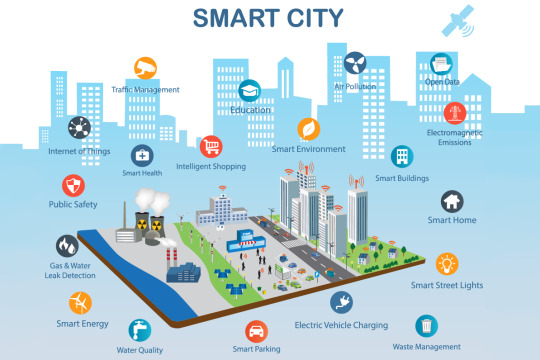
IoT Empowerment: IoT forms the bedrock of smart cities, and SAP's IoT solutions facilitate the seamless connection and management of countless devices and sensors. From smart traffic lights to waste bins, this connectivity allows real-time monitoring and control, enhancing everything from traffic management to environmental sustainability.
Predictive Analytics: SAP's predictive analytics tools enable cities to foresee trends and challenges. For instance, predictive maintenance identifies when critical infrastructure, like bridges or water pipes, may need attention before a major issue arises, saving both time and resources.
Citizen Engagement: Smart cities thrive on citizen involvement in decision-making. SAP provides platforms for citizen engagement, such as mobile apps and online portals, where residents can report issues, take part in surveys, and access information on city services and projects.
Energy Efficiency: Energy management is a top priority for smart cities, and SAP's smart solutions for smart cities help cities monitor and optimize energy consumption in public buildings, street lighting, and other municipal facilities. This smart solutions for smart cities reduces costs and environmental impact.
Conclusion
SAP's essential role in smart city development is assisting cities throughout the world in addressing the complex issues of rising urbanization and resource management. Cities are becoming more efficient, sustainable, and responsive to their inhabitants' demands by leveraging SAP's expertise in data management, IoT, and analytics. The influence of SAP smart business on the future of smart cities is poised to grow as technology progresses, providing more livable, connected, and resilient urban settings for future generations.
3 notes
·
View notes
Text
The Role of AI in Mobile App Development
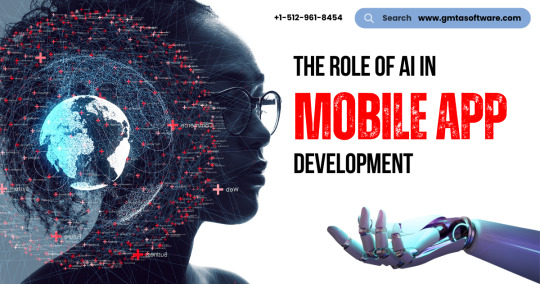
The Role of AI in Mobile App Development has emerged as a transformative force in the ever-changing technological world, altering industries and pushing the boundaries of creativity. As we see AI incorporated into mobile applications, it is evident that this symbiotic relationship is more than simply a technological trend, but a fundamental shift in how we interact with our devices. We will examine AI’s multifaceted role in mobile app development, including its impact on user experiences, predictive analytics, voice recognition, performance optimization, enhanced security, and development process automation, in this in-depth investigation.
1. Improved User Experience:
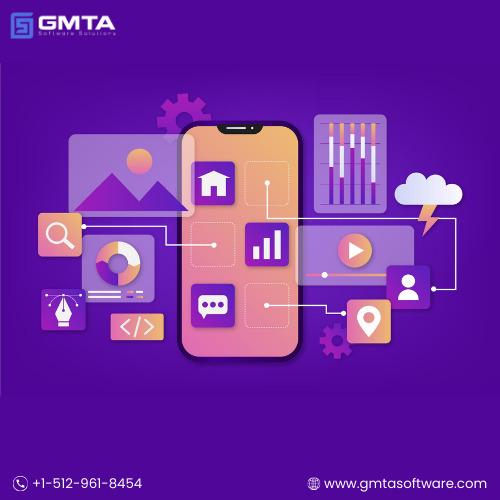
The capacity of artificial intelligence (AI) to improve user experiences is important to its position in mobile app development. Applications that are one-size-fits-all are no longer accessible. AI-powered applications can now recognize and respond to individual user behavior thanks to sophisticated machine learning algorithms. These algorithms assess user habits, preferences, and historical data to deliver a tailored experience, demonstrating the benefits of incorporating AI in mobile app design. AI integration guarantees that mobile apps adapt to each user’s particular demands, resulting in greater user delight and engagement, from personalized content recommendations to tailored user interfaces.
Anyone seeking to develop budget-friendly mobile apps must consider AI as a cost-effective alternative. See our blog on creating budget-friendly mobile apps for more information on how to use AI efficiently without breaking the wallet.
2. Analytics Predictive:

One of AI’s differentiating characteristics in mobile app development is its predictive analytics capabilities. By using the power of machine learning, mobile apps can now predict user requirements and behaviors. AI-powered predictive analytics transforms mobile applications into intuitive and anticipatory tools, whether it’s anticipating the next music a user would enjoy, recommending similar things, or delivering personalized content ideas. This not only enhances user interactions, but also the overall efficacy of the program, underlining the advantages of using AI in mobile apps development and making it an inherent part of the user’s digital world.
3. Natural Language Processing (NLP) and Voice Recognition:

With the evolution of speech recognition and Natural Language Processing (NLP) technologies, a new era of mobile app interaction has arrived. AI-powered apps are improving their ability to identify and respond to spoken language, allowing users to interact with programs through voice commands or text input. Virtual assistants, language translation tools, and voice-activated instructions are just a few ways artificial intelligence is increasing user experience by enabling more natural and hands-free involvement. This not only simplifies things, but it also increases the accessibility of mobile apps to a bigger user base, exhibiting artificial intelligence in mobile apps.
GMTA Software’s workforce is well-known for providing cutting-edge solutions adapted to your specific needs when it comes to mobile app development services.
4. Performance Enhancement:

AI algorithms are critical in enhancing the speed of mobile apps. These machine learning-powered devices may evaluate use trends and automatically alter settings to ensure top performance. AI-driven innovations in resource management and battery efficiency lead to a better and more efficient user experience, demonstrating the Role of AI in Mobile App Development. Mobile apps may adapt to a user’s particular requirements and preferences, ensuring that the device runs properly while also increasing battery life, which is key for mobile devices, which are an important element of our daily existence.
GMTA Software offers customized solutions to enterprises interested in on-demand mobile app development services.
5. Increased Security:

In an era of increasing data breaches and cyber threats, the use of AI to improve mobile app security has become important. Security features enabled by artificial intelligence are designed to detect abnormalities in user behavior, identify potential threats, and take proactive security steps to protect sensitive data. Through biometric authentication, anomaly detection, and encryption mechanisms, AI adds intelligence to mobile app security. This is especially true for applications that deal with financial transactions, healthcare data, and personal information, where the stakes are high and client trust is critical, underlining the Role of artificial intelligence in mobile app development.
Also Explore: Best Mobile App Development Company in USA
6. Development Process Automation:

AI not only enhances mobile app user experience, but it also changes the development process. The use of artificial intelligence (AI) in mobile app development leads to a wave of automation that shortens the app development lifecycle, showcasing how to use AI in mobile app development. AI technology may now be used by developers to automate repetitive activities, decreasing the requirement for manual involvement. Automation enabled by AI is tremendously useful in code generation, testing, and debugging. This not only speeds up development but also frees up developers’ time and resources for more creative and sophisticated elements of app development. As a result, not only are development cycles reduced, but more creative and high-quality mobile apps are now feasible.
AI integration into mobile app development is a paradigm shift in which technology becomes a dynamic facilitator of customized, efficient, and secure user experiences. The powers of AI-powered mobile applications are changing the digital world, from recognizing individual preferences to anticipating user behavior. Looking ahead, it is clear that artificial intelligence will play a growing role in propelling the growth of mobile apps. Developers and organizations who embrace these AI-driven capabilities will be able to not only keep up with trends, but will also be able to lead the charge in designing creative, high-performing mobile applications that adapt to users’ ever-changing expectations in this dynamic digital environment.
The role of artificial intelligence in mobile app development extends beyond technology to deliver a user-centric, intelligent, and creative digital experience.
1 note
·
View note